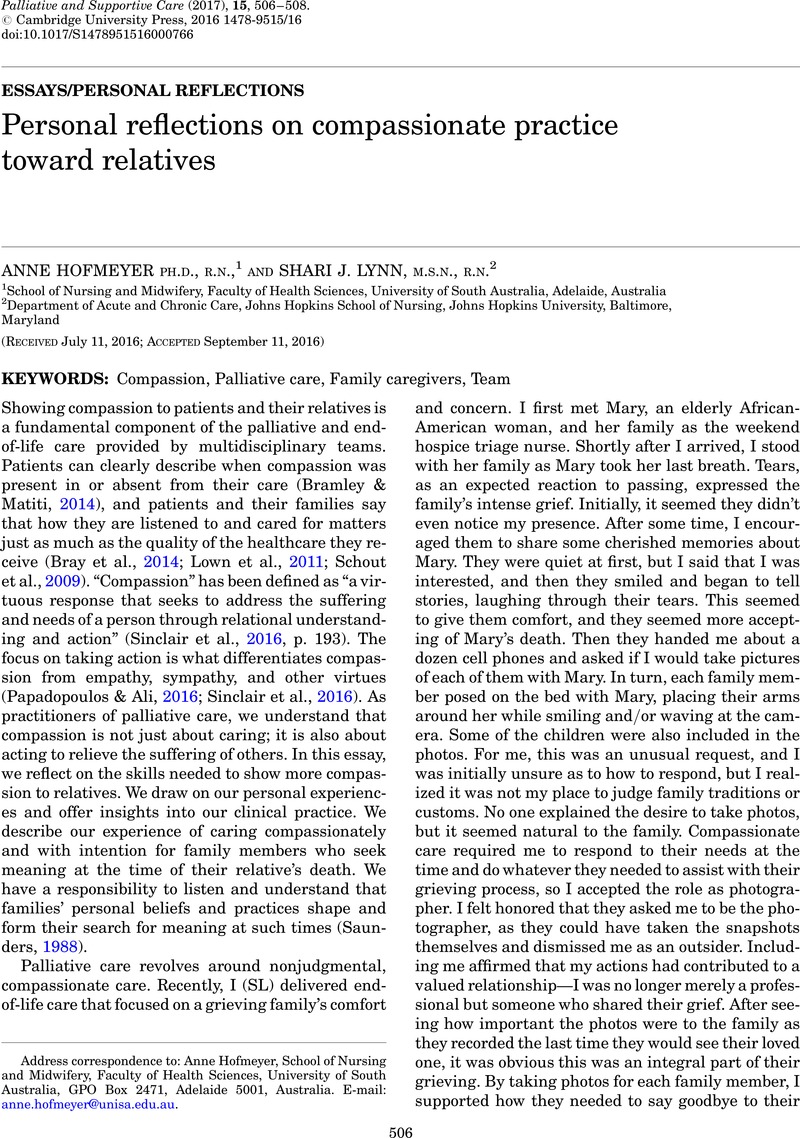Crossref Citations
This article has been cited by the following publications. This list is generated based on data provided by Crossref.
Bafandeh Zendeh, Mostafa
Hemmati Maslakpak, Masumeh
and
Jasemi, Madineh
2022.
Nurses' perceptions of their supportive role for cancer patients: A qualitative study.
Nursing Open,
Vol. 9,
Issue. 1,
p.
646.





